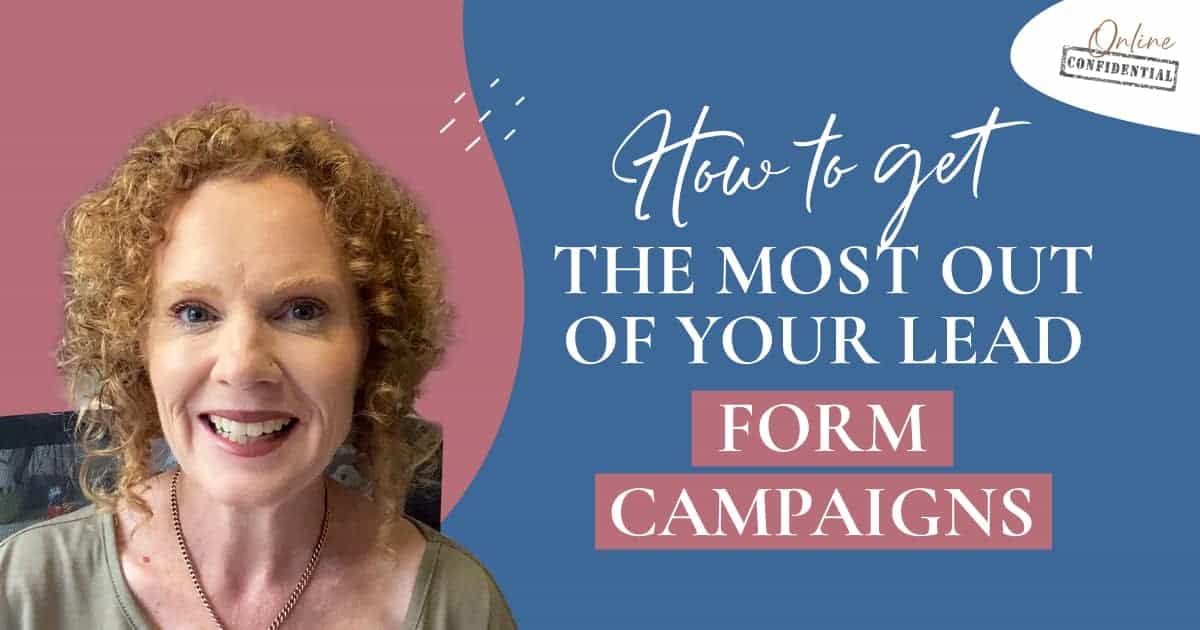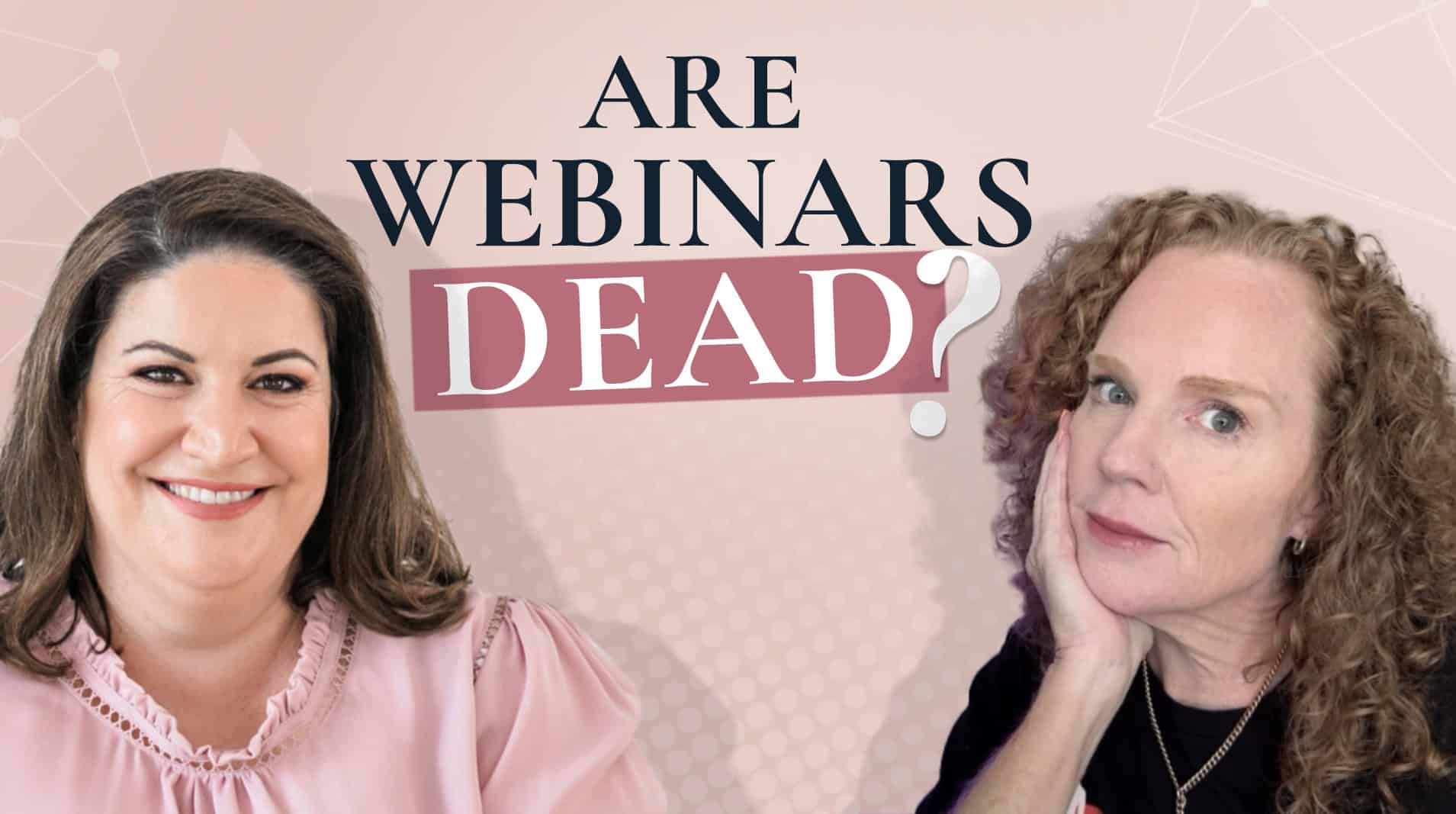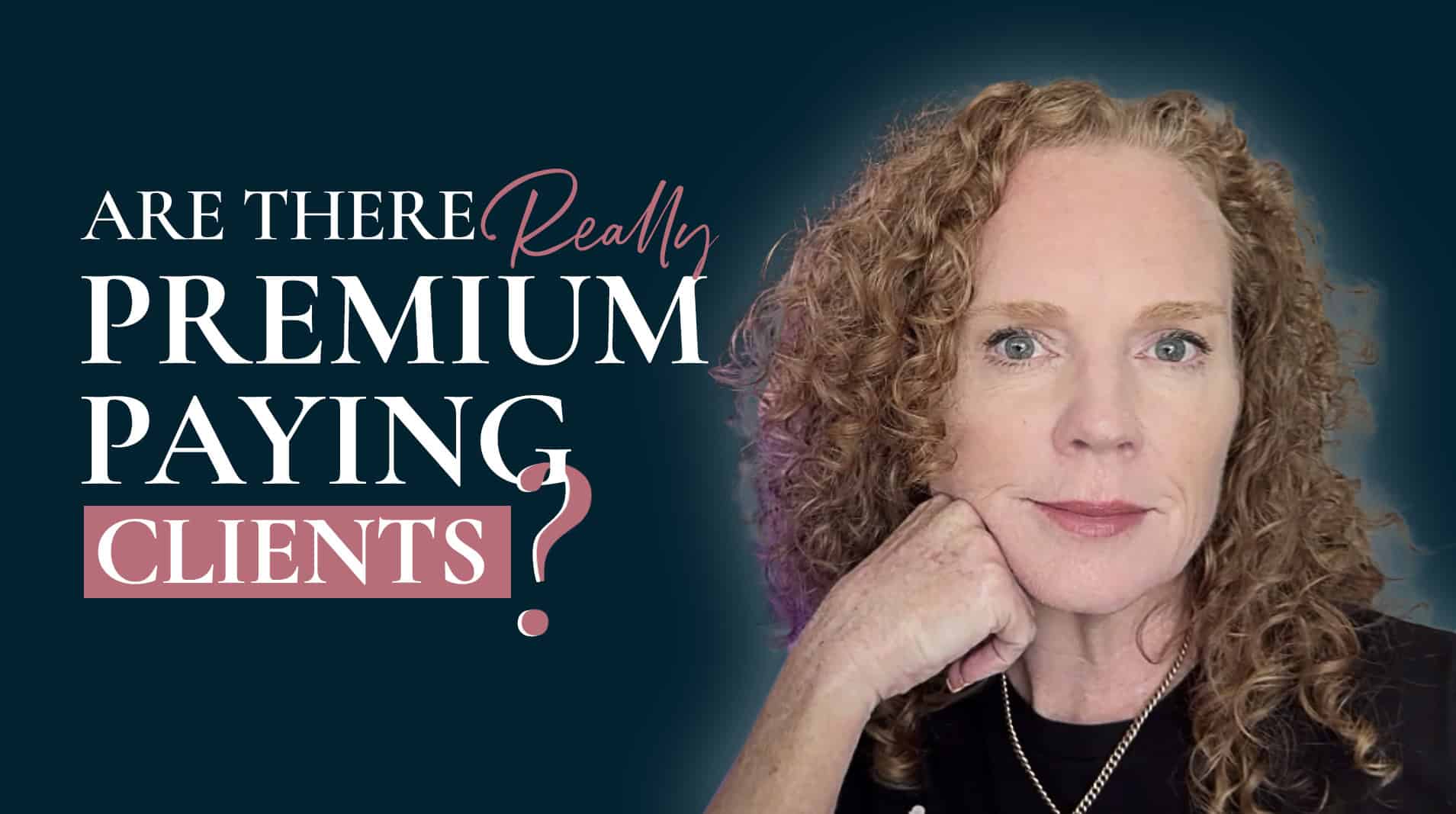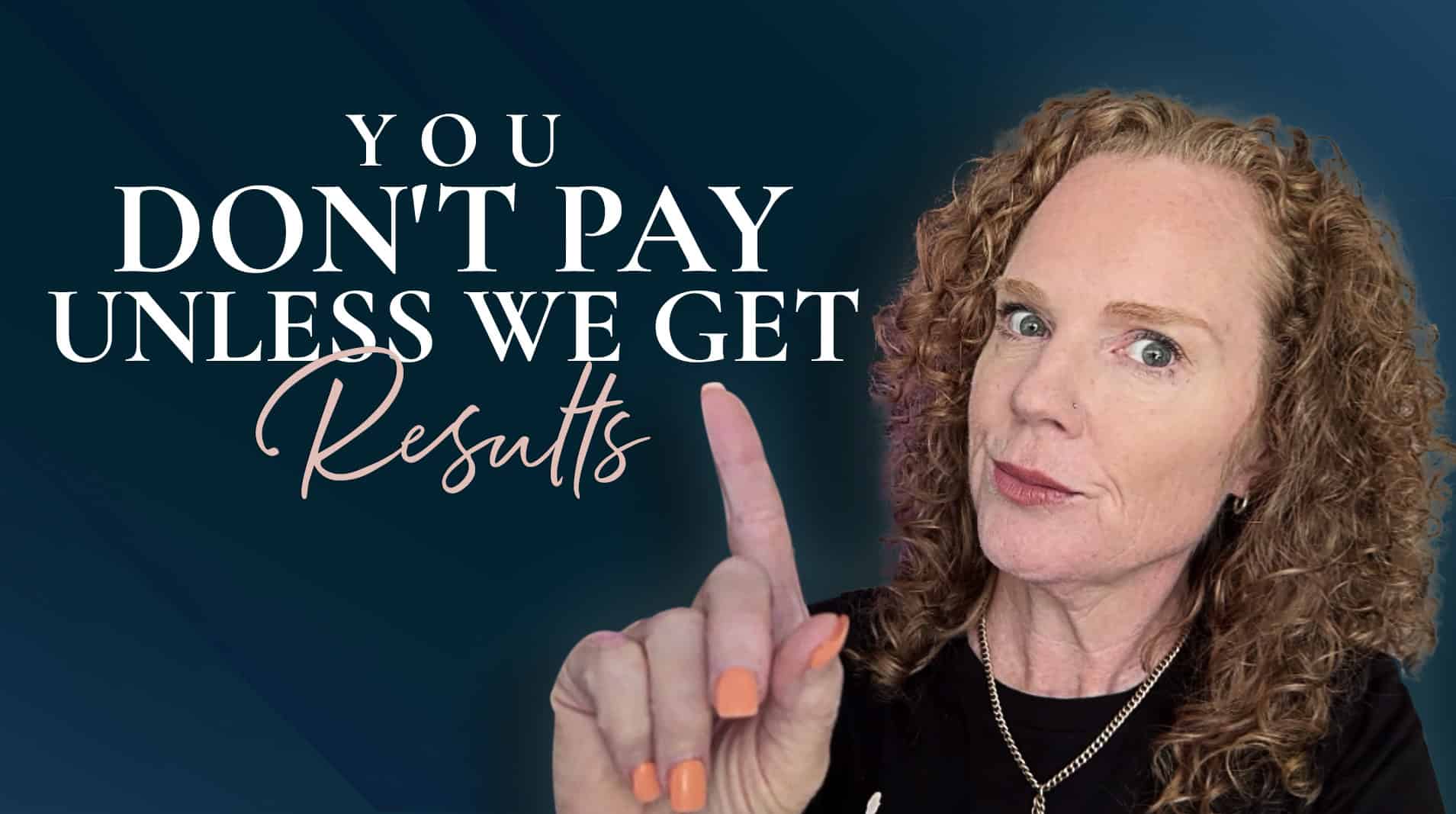Since the rollout of iOS and all the changes to the platform and tracking, a lot of advertisers are running over to test lead form campaigns (or as they’re called in Facebook, lead generation campaigns). That’s where we create that lead form in our page or in our ad account that attaches to an ad, so people can just tap on the ad and then tap a couple more times. Their information is easily submitted, and they’ve opted in. In the past, lead forms have copped a lot of slack that they’ve not been generating quality leads for that exact reason, because people can just tap-tap, and they’ve opted in, but they have no recollection of what they’ve even opted in for.
Even though Facebook has brought in a couple of features that should help us to get higher quality leads, like at the ad set level, we can optimize for leads or conversion leads. And then also when we create the lead form, we can select it to either have quantity vs. quality, so to speak.
You can have a higher intent because there’s just one extra page in the lead form to get that higher intent lead. There are a couple of features to test as you’re running your lead form ads, but we are going to look at three ways that you can make the most out of your lead form campaigns to either get those people who are opting in to take that next step, or to help make sure that we are getting the best quality leads we can.
Even though lead form campaigns (or lead generation campaigns) may help to bring in lower cost leads, it’s of no value to us or our clients if those leads are not converting or if they’re not even opening the emails. There’s a couple of things that you can do. Number one is to optimize that last page in the lead form. So as you create it, that last page will have a call to action, like a website that it could send people to.
Now, this is where you may put in a link for people to click and immediately go off and access their lead form or that thing that they have just opted in for. That’s great. And you can certainly test that out and see what the numbers are for people who have opted in to the lead form. Then you’ll be tracking that page that you’re sending people to.
You can have a customer event or a standard event on there. You’ll be able to see how many people are clicking on that and going over to that page so they can access their opt-in (or whatever it is) you’ve often offered to them straight away. However, it’s a really good idea to help train this new lead right at this point to head over and open their email because that’s what we want them to do.
We don’t want them to just opt in and never hear from us again. And we want them to open our first email that we’re sending them and get them in the habit of opening all of our emails. So how we do that is on that last page in the lead form, we tell them to head over now to their inbox and open up their email from us to access their guide or cheat sheet, whatever it is.
Now, what you can do with that button is to put a link to another next step that you could refer them to. You may have something that you could show them, like a video, that would complement this guide or this checklist. For example, they can download the checklist and then click the link below it to open up a video that pairs perfectly with it.

So the first thing is to direct them over to the inbox to get their guide or whatever it is they’ve opted in for. We’re training them to open up their emails. Next is to add a link for them to click, which could be the perfect accompaniment to help them understand the product you’ve just shared with them, or how to put whatever you’ve offered them into practice. What’s the benefit of having these two things combined? We’re directing them to their inbox, and we’re also giving them something that’s going to be of extra value that goes with this cheat sheet that we can put in that button to send them over to that page. After that, you want to retarget them. I love retargeting. Retarget, retarget, retarget!
If you’re not retargeting, you’re leaving money on the table. With our lead form, there’s two ways that you can retarget them. You can retarget people who have opened the lead form and have not submitted, and you can retarget those people who have opened the format who have submitted. I would put both of those audiences into a nurture campaign so that we can get a reach campaign that has five different ad sets with one ad per ad set so that it can just be popping up in their newsfeed.
For example, once every five days to stay fresh in their mind. That’s the strategy I use, which is called my Client Attraction Code program. This way, we have a 30-day, 60-day, a 90-day audience where we can be retargeting and getting back out in front of that audience. And depending on what action they took, if they opened and did not submit, we’ll include one of those ads to have a different hook to get them to come back and opt in either for the same thing, but it’s got a different hook or a different angle. Perhaps it’s something else. You’ve piqued their interest, but they weren’t quite ready to convert. So what else could we offer to them that they would convert for?
And then, for those people who have opted in, what is the next step in your funnel? What is that next step in the customer journey that you want them to take? You retarget them with that. If they’ve opted in for a guide or cheat sheet, now retarget them to come over and watch a webinar or book a call or whatever it may be.
So that’s number two. And then number three is checking our data with our CRM (Customer Relationship Management) now that we’ve got people opting in. And like we said earlier, cheap leads would be ideal. But are they good quality leads? Are they even opening our emails? That’s what we need to see. If you’ve been running ads that have gone off to a landing page and people have opted in there, then you would have data that’s showing you what the open rate is from those leads. Typically, 40% or more, but 60% would be ideal. Hopefully it’s a little higher for that first email that gets sent to them. When you’re doing lead form or lead generation ads, you need to make sure that we’re still getting a great open rate.
Otherwise, we’ve just got the happy tappers. They’ve come and they’ve tapped. They’ve opted in, then they don’t even know what they’ve opted in for. They’ve never gone over and opened up the emails. So check the CRM and look at the open rates. If it’s 40% or more, then great. There’s still some room for improvement if it is just around that 40%, and you can start testing around possibly with different headlines to see if you can increase that open rate. Now, if you haven’t been running ads off Facebook over to a landing page and getting people to opt in (so you have the data of what that audience looks like with their open rates) then just go by the benchmark of, for example, at least 40% of people who opt in for this lead form to come over and open it. If you’ve got less than 40%, then immediately start work on the subject lines. See if you can improve the subject line to get the people who opted in to open those emails. If you are already at 40%, there’s still room to improve. Again, continue to tweak and work on those subject lines. This is something that we should always be doing. Looking at the data, looking at our open rates, and trying to improve things.
So you’ve been testing and tweaking, but still it’s lower than 40%. It’s 20% or 30%, then I would say it could be the quality of the audience that is opting in. Go back to the ads, go back to your audiences, and continue to do more testing there so that it may pull in more of that ideal client and repel those people who are just tapping in, opting in, and not opening up the emails. Change your copy, change your targeting to bring in and attract those people who are more likely to open those emails. We are always testing when we’re ad managers, right?
So there’s three ways to get the most out of your lead forms. First is to send people over to their inbox to open it up and provide something of extra value that they can click on on that last page of the lead form that will perfectly combine with that offer that they’ve just opted in for. Second is to retarget. Hello! Get back in front of them again with that next offer or a different hook to get them to come back and opt in. And third is to check the open rates. Make sure that they are heading over and opening up their emails, and then you can tweak and improve if necessary.
Have you used lead forms? Are you using them? I’d love to hear from you and hear your experiences or any questions you have about lead forms.
If you would like to know more about ad strategies and what strategies to use, I’ve got nine different strategies that I talk about in the Elite Ad Manager certification. If you want to know more about that, head over to eliteadmanager.com and grab your seat and find out how the Elite Ad Manager can help you to consistently hit five-figure months.
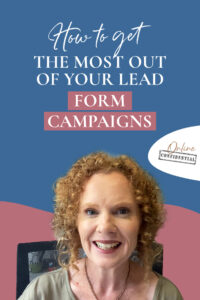
BLOG
Episode 55: How To Get Most Our Of Your Lead Form Campaigns
Since the rollout of iOS and all the changes to
Jody Milward
